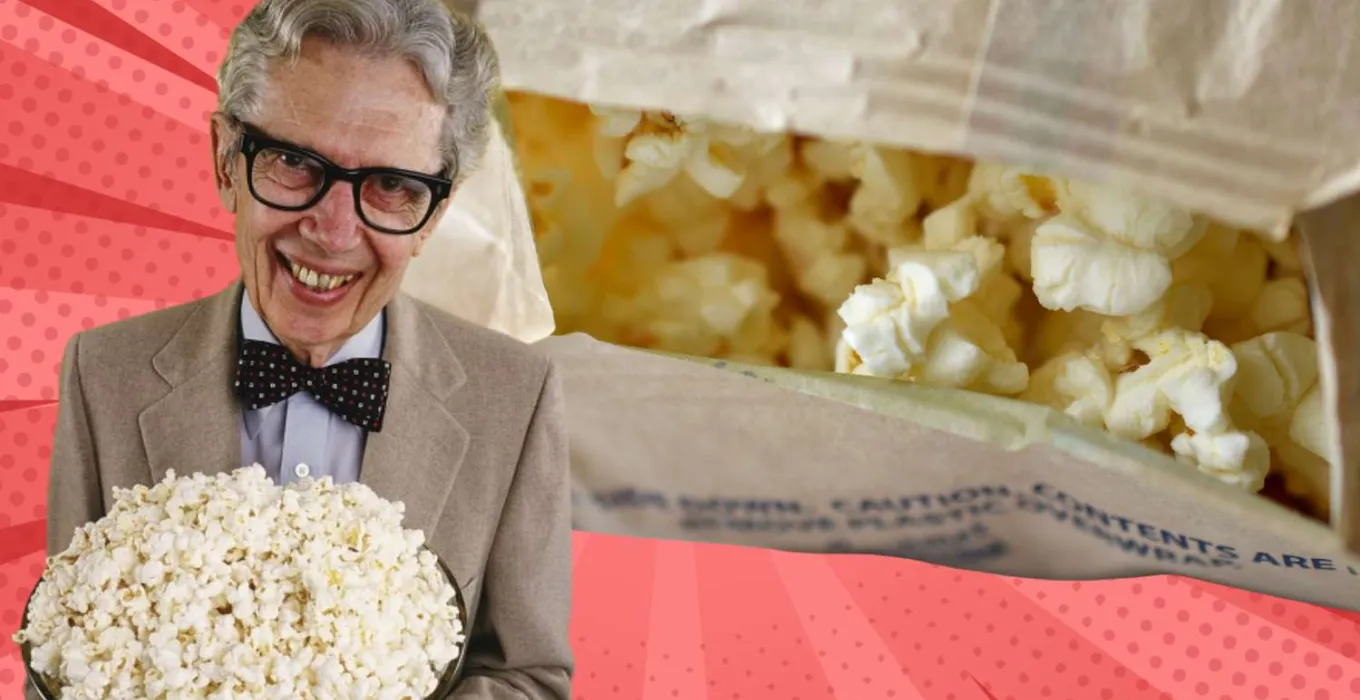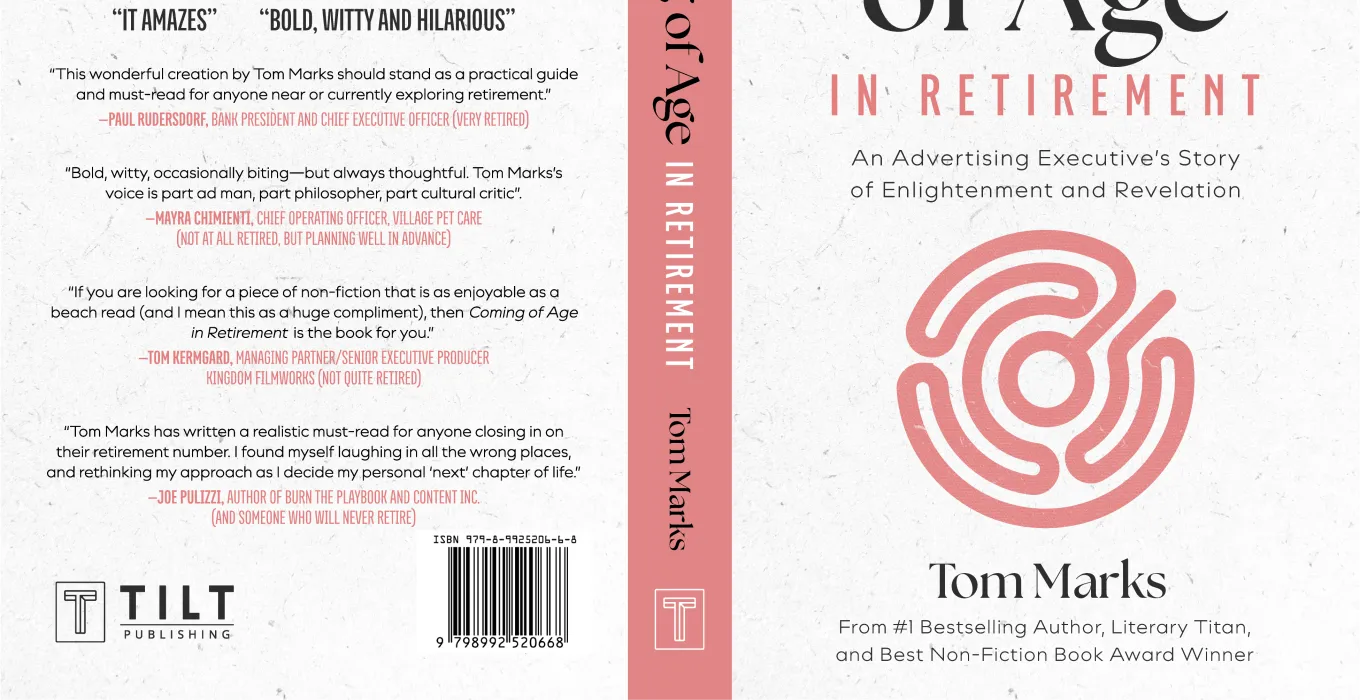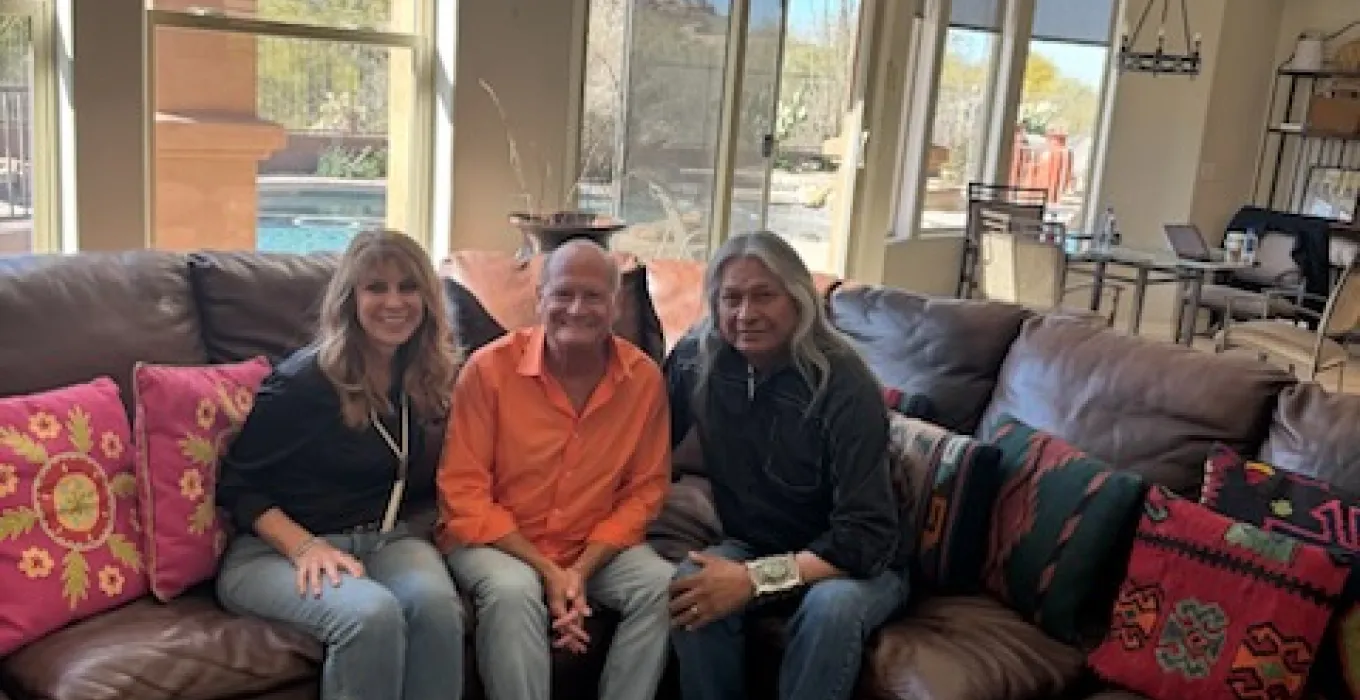As The Story Goes, Orville Redenbacher Was A Nincompoop

Their paths crossed only three times. Twice in Valparaiso, Indiana and once, many years later, in the south Loop of Chicago. They had little in common when they met in 1965 except they both wore bow ties, each of them preferring the batwing knot to the butterfly.
Valparaiso is less than an hour’s drive from Chicago, but they might as well be a thousand miles apart. Valpo, as it’s called by those familiar with the town, houses 30,000 people, it’s rich in agriculture, but poor in culture. It’s one of those heartland communities that people say is a great place to raise a family, which means there’s little crime, little to do, and the public education system is excellent, assuming a lack of diversity makes the public education system better. There are plenty of tree-lined streets in Valpo where the homes are as modest as the household income. Like many small towns in Indiana, the community comes together because high school basketball is like Texas high school football, without it, there’s little to cheer about.
Chicago, of course, is a different story. It’s rich in culture, but poor in keeping its residents safe. It’s not a great place to raise a family. Crime has always been rampant, drive-by shootings have been commonplace since the Prohibition, and the public schools have long underperformed, badly. Many Chicago streets are lined with concrete, and as we all know, many of the city’s residents have their pockets lined with graft. Like other big cities, the community comes together every morning and every late afternoon for rush hour on the Dan Ryan, the Edens, or the Kennedy Expressway. During those times, there’s little to cheer about.
Melvin L. Marks, my father, wasn’t from Valparaiso or Chicago. He was born in Ottumwa, Iowa, and his favorite sight was seeing Ottumwa in the rear-view mirror of a troop bus on his way to Camp Pendleton - a mere eight weeks prior to shipping-out to Normandy during World War II.
He told the recruiters he was 18, hard-up for foot soldiers, they never doubted him. He was barely 17 and most assuredly wanted out of Ottumwa. He also wanted out of his life. Having never really known his father, and having been accused by his mother of breaking her spleen and doing other damage to her body upon delivery, he was doomed from day one, absolutely. All hard to believe since my father was small at birth, and remained thin and boyish throughout life. As it turned out, his father was a clothing salesman working the Kansas and Iowa territories, calling on retailers, always dapper, and always gambling. His luck ran out when he was hit by a train, thinking he and his Plymouth could beat it across the railroad tracks. The ultimate wager lost.
Orville Redenbacher’s luck ran out when he suffered a heart attack in his whirlpool in Coronado, California and drowned. He was from the Valparaiso area, and spent most of his life there, enamored with agriculture, the family farm, and later, a mildly successful fertilizer business that had made him a reasonably wealthy man. His parents died less than a year apart when he was 14, but with help from his relatives, he studied agriculture at Purdue University. Even before that time, he was prone to wearing bow ties in his adolescence, and consequently he very much looked in death as he did at birth. In his own way, he too was dapper, and he too started selling to retailers (bar owners); in fact, mostly from the back of his station wagon, gambling the small fortune he had already amassed on individual plastic bags of popping corn kernels through a business he called Red-Bow Popcorn.
*****
The grocery trade is the ultimate battleground of sales promotion, back-door deals -- often called slotting fees -- and pay-offs. There are 60,000 products vying for the attention of daily shoppers, and to move your product into a store, someone else’s needs to be moved out. It’s competition at its fiercest.
The ultimate reward for product movement is a free ride to the FMI Show at Chicago’s famed McCormick Place. The grocery trade’s dirty little secret is to convince consumers that margins are wafer thin, and they are, in some aisles. There’s very little profit in the center of a store, but the “horseshoe” is a goldmine. Those are the perimeter departments starting with produce, moving around to the meat and seafood counter, into deli and home meal replacement (HMR), then to the bakery, liquor and gourmet cheeses, other products for the gourmand, and buy local goods. Often times, these product margins teeter between 40%-60%, a far cry from the 1% margins grocers claim they’re saddled with and want you to nefariously believe.
Popcorn, both in its popped form and kernel varieties, is in the low margin, center aisles of a store. In the early sixties, it was dominated by a brand named Jiffy Pop, which were kernels packaged in tin foil that you precariously held over a kitchen stove. As the kernels popped, a bulbous tin foil balloon expanded to hold the contents. When the process was complete, you were assured of two things. The hot steam from the foil envelope was going to singe your fingers, and the bottom popcorn, those closest to the stove, were generally burned. Jiffy Pop was an inferior, but popular brand. There was still room for a good popcorn product, but no one had been able to put a dent in Jiffy Pop’s tin foil armor.
*****
My father’s second greatest love was advertising. With assistance from the GI Bill, he was able to land a job at the famed ad agency Foote, Cone & Belding (after he become a Midwest beat reporter for Variety Magazine), and over the years, was able to toil his way up the ranks to the position of Worldwide Director of Merchandising. He worked on leading brands in the fifties and early sixties including Armor-Dial, Swift Premium, and Alberto-Culver. In the mid-sixties, he broke free of the corporate frenzy and became an acclaimed marketing consultant to the food and drug industry. His greatest love, however, was writing. Up until his death at the age of 95, he still understood the potency of words, as he pounded-out his text on an Olivetti typewriter in spite of complaining how badly the mass of metal hurt his fingers and wrists.
His bestselling book, Jews Among the Indians, sold nearly 20,000 copies, mostly to Jews, only a handful to Indians. He followed that up with Yesterday’s Warriors, a revealing look at World War II and the shrinking battalion reunions that had taken place each year since. At the time, he was one of only three remaining survivors in his battalion. Before those books, he found a small amount of fame writing an annual article in Runner’s World Magazine that reflected on the amount of martinis he consumed each day and the number of miles he ran every week. The article’s pay-off was, of course, how many miles per gallon of vodka he ran each year. He also landed a coveted spot in the New York Times Magazine’s About Men column almost expressly reserved for the top writers of the day. A framed copy of his article, A Nightingale Sang, still hangs in my home today.
Orville Redenbacher’s second greatest love was agriculture, specifically fertilizer. He toiled anonymously as an agriculture instructor and county field agent teaching farmers the newest ways to plant, fertilize and harvest their crops. After that stint, he was hired as a farm manager for a 12,000-acre property, and later worked as a low-level executive for a private fertilizer concern. In the early 1950s, he went off on his own when he purchased a small, local corn seed company. Redenbacher believed the business world was ready for its next success story, and he was going to be it, no matter what steps would need to be taken.
Orville’s greatest love, however, was popcorn. He tinkered for years in pursuit of the perfect popping corn, and tested more than 10,000 different hybrids until he found satisfaction. Redenbacher’s seed company was called George F. Chester & Sons, and his perfect hybrid corn seed was named Red Bow. Neither one of these names created much enthusiasm among Indiana consumers, and the brand died a slow death over the course of a dozen years or more. That is until Orville Redenbacher picked up the phone on a frozen January day in 1965 and called my father and my father’s partner, Irv Gerson.
*****
For a long time, I’ve believed that money is pretty representative of good and bad. You can become a better person with it just as easily as you can become an awful one. It kills and it imprisons. It ruins relationships and it tests faith. It creates addictions and it destroys civilizations. It can change a man from humble to cold. But it also feeds the homeless and frees the innocent. It can bring communities together and it can explore science, behavior and beliefs. It educates and it rewards. And I know, because I’ve seen it time and again. Money can change a man who was hardened through no fault of his own into someone sensitive to the dirty ways of the world.
Two worlds apart were about to meet in a modest farmhouse on the outskirts of Valparaiso. Driving southeast past the steel mills in Hammond, Gary and LaPorte, smoke and fire alternatively shooting skyward from 40 foot smokestacks, my father was about to go toe-to-toe and bow tie to bow tie with Redenbacher. On the phone, Orville was mildly aloof and distant, no doubt troubled by the fate of his Red Bow brand of unpopped popping corn. In less than an hour’s time, unbeknownst to both men, their lives would change forever.
For good and for bad.
The white farmhouse trimmed with wooden black shutters was a reflection of a man with a great sense of humility. A Chevy station wagon was the only car in the gravel driveway, and a wrought iron door knocker stood ready to welcome my father, a complete stranger to Orville and his wife, Gail.
Over a cup of coffee at a wooden table with two wooden chairs in a kitchen nook, the two men spoke. Orville had been tipped-off that my dad was an expert in the grocery trade – a buyer from A&P had told him so. He spoke slowly and measured about how he developed the perfect hybrid of popping corn. It popped fluffier, there were less unpopped kernels, which he referred to as “shy fellows”, and everyone told him the popcorn simply tasted better. The two men sampled a batch, and my father, not much of a popcorn eater at any time in his life, politely agreed.
The project would be a challenge, there was no brand awareness, no money for promotional support, and no brand extensions, just popcorn and only one type at that. A free ride to the FMI Show was a pipedream. But the two men agreed to proceed, a fee was discussed, followed by a handshake. That’s the way deals were done 60 years ago. There was nothing more important than a man’s word, it’s the rare instance when the spoken word becomes both meaningful and legal.
As my father drove back home to the inner-city he couldn’t help but feel a little sorrowful about what just occurred. Here was a man, Redenbacher, so passionate about something so unachievable, shouldn’t have my father declined the opportunity and spoke of the impossibility of success? But there was a family to support, and a new business that needed recognition, and if it weren’t the firm of Melvin Marks & Associates, it would most assuredly be someone else.
*****
Over the course of the next 45 days, my father called and met with his network of grocery buyers who would help him formulate his recommendations to Orville. The more research he did, the more pessimistic he became. In the grocery trade, the popcorn buyers also purchase chips, cookies, crackers, nuts and candy. It’s a low-level position and a far cry from a buyer of produce, or health and beauty aids. Looking to make their mark by buying low and selling high, these snack-food buyers were rank greenhorns wanting to show the top brass healthy earnings thereby earning their way up the food chain, literally.
Even with Jiffy Pop’s huge market share, a single grocery store might only move a case each week, that’s 144 of the wire-rimmed, foil wrapped product generating a mere $750 of sales. A pittance to a store that could sell a million dollars of groceries in a week.
The name of the game in supermarkets are “facings’. This is where shelf space meets eyeballs. Facings are measured horizontally by how much space your products can stretch onto a shelf’s bay. Facings are also measured vertically by where they’re positioned on that bay. Find yourself at the bottom and you’ll find yourself half-way out the door. Find yourself on the very top, too high for some women and the geriatric set to reach, and you’ll be more than just out-of-touch.
Nothing was going to be favorable in shelf positions for Orville Redenbacher. Popcorn was a slow mover, a low margin product, a product that didn’t even demo well compared to pizza, sausages, and cheese samples. After 45 days of frustration and concern, my father was ready to tell Orville the truth. My dad was used to that. He had recently told the President of Armor-Dial that his wife’s idea for a new product called, Soaprise was a very, very bad idea. She mistakenly believed that a bar of soap with a hidden treasure inside, just like Cracker Jacks, would make a child want to bathe more frequently. My father explained to them that children would easily find a way to the surprise and bypass the bathing process altogether. They didn’t listen to him, and Armor-Dial went on to produce thousands of cases of Soaprise that sat on grocery shelves unsold for months until the cases were pulled and destroyed.
There was only one option remaining. A recommendation so bold, so untested, and completely unfounded considering the research. In fact, my father and Irv Gerson, had discussed it only in passing. But as the final hours neared, and my father was to meet with Redenbacher a second time, they started working on the high level details, and when finished, they believed it was a “door-slider”, an advertising idea that’s so good you can literally slide it under a client’s door and walk-away without explanation. It’s that good.
Not much had changed in the two months from their first meeting. It rarely does in Valparaiso. Same kitchen nook, same coffee cups, same table and wooden chairs. My father poured over the research findings with Orville. He talked about the difficulties of bringing his popping corn to market, the problems with distribution, shelf facings, low sales within the category, and the fact that Redenbacher would need to hire food brokers to gain distribution within the stores. Food brokers rep the little guys, companies that can’t afford their own sales reps, the independents like Redenbacher, but the brokers charged a pretty penny, sometimes 15% of every unit sold. It was a hostage and ransom relationship, but a relationship of necessity. Redenbacher had no choice if he wanted to play the game.
“Orville, this is what I want you to do. I want you to listen very carefully to what I’m going to tell you. And when I’m done, I want you to hold your ground, stick to your guns. Don’t let anyone tell you what you’re going to do is crazy. They’re all naysayers anyway, all they want is to see you fail.”
Redenbacher had no idea what he was in for.
My father went on, “Orville, I want you to put your popping corn kernels in a glass jar."
“Are you out of your mind, Mel? A glass jar is 10 times the cost of other packaging. And the shipping costs will sink me, all that weight will take me down.”
Patiently my dad continued, “Orville, the next thing I want you to do is triple the price of the product.”
“That’s enough Melvin, are you insane? I’ll be out of business before I’m even in business. No one is going to pay 8 or 9 dollars for popcorn.”
“I want you to do three more things for me, Orville. I want you to retire the name of Red Bow and I want the new name to be Orville Redenbacher’s Gourmet Popping Corn.” Resistance yielded to reception. My father had been around long enough to know that a man’s ego would always reconcile a man’s trepidation.
“Then Orville, I want to put a sketch of you on the label and I want your signature to be right under the sketch, just like it was a personal guarantee of goodness."
“Okay Mel, what’s the other thing you want me to do?”
“I want you to be the brand, bow tie and all. I want you to go to every popcorn festival, every grand opening of every grocery store, and when the money starts rolling-in, I want you to be front and center on all the television commercials. And remember, never, ever lose the bow tie. Never."
It truly was a door slider. That’s all the explanation that was needed.
*****
The Food Marketing Institute trade show, known simply as the FMI, was held every year in Chicago during June when the city starts coming alive. When the bike path from Sheridan Road all the way to Olive Park is teeming with runners, walkers and bikers. When the outdoor café’s on Rush Street are standing room only, and Lincoln Park Zoo plays host to thousands of visitors every day. Thousands of people attend the FMI show at McCormick Place, a 2.5 million square foot exhibition space standing shoulder to shoulder with Chicago’s Soldier Field.
The show is a three-ring circus of commerce. More than 1,000 food and beverage exhibitors demonstrate their wares. The crowds flow down perfectly measured, carpeted aisles, and the alcohol flows accordingly. Every beer and distiller known to man exhibits and serves, and this has led to the show’s reputation as being the place where products are launched and affairs are too.
With McCormick Place so close to my father’s office, it was not unusual for him to stop by the show, get the lay of the land, and meet old friends. It had been years since he instructed Orville what to do. In fact, it had been 20 years. In that time, no communication between the two took place. No thank you card from Redenbacher, and no attempts to contact Orville from my father. I suppose both considered the job done.
In those years, Redenbacher became an incredibly wealthy man. He sold the business to Hunt-Wesson for millions, and also retained some stock in that corporation. Shortly thereafter, Hunt-Wesson was sold to a company called Esmark, and a year later, Esmark was sold to Beatrice Foods, which was then purchased by the venture capital firm Kohlberg Kravis Roberts. KKR unloaded the popcorn business to ConAgra, coincidentally, the owner of Jiffy Pop, the king of the popcorn category only to be mercilessly dethroned by Orville Redenbacher’s Gourmet Popping Corn.
And with every sale, Redenbacher became more and more wealthy. My father thought it was aisle 300 when 50 yards away, and walking toward him, he spotted Orville Redenbacher. He was dressed as he always was, bow tie, white shirt, and tweed sport coat, but this time he was flanked by two pin-striped suits no doubt from Beatrice Foods. They approached each other and the chance meeting was cool. Redenbacher, now 78 years old, had become known in the industry as being “difficult”. He was temperamental, egomaniacal and headstrong. A far cry from a desperate man living in a modest farmhouse on the outskirts of Valparaiso.
Redenbacher introduced his two companions to my father, “I’d like you to meet Mel Marks, the asshole who charged me $20,000 to tell me to put my own name on my own popcorn.”
*****
Although I’ve known this story for years, it wasn’t until just before his death that my father told me he only received $15,000 of the $20,000 from Redenbacher. Orville stiffed him for the remaining share. Without a signed agreement, and with Redenbacher’s vast wealth and resources, it would have been a waste of time tracking down the other five grand.
Is it fair to say that money alone can turn the humble into the horrid? I would hope not. No more so than money alone can turn the dreadful into the delightful.
It’s more than that. For with money or without it, it’s still a person's word that defines the good and the bad. It defines character, ethics, behavior, and legacy. A lot has changed in those 60 years since my father and Orville first met. But the constant will always be those good people who do what they say they’ll do, keep their promises, and stay true to their word. Unfortunately, the one other constant is that there aren’t enough of those people around anymore.






